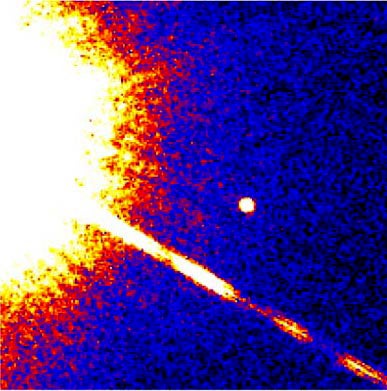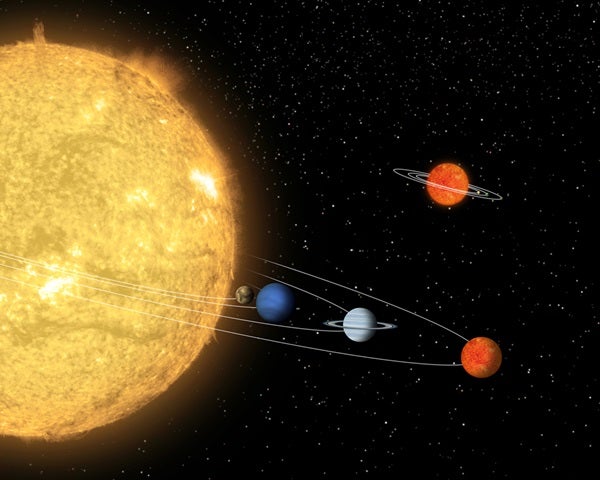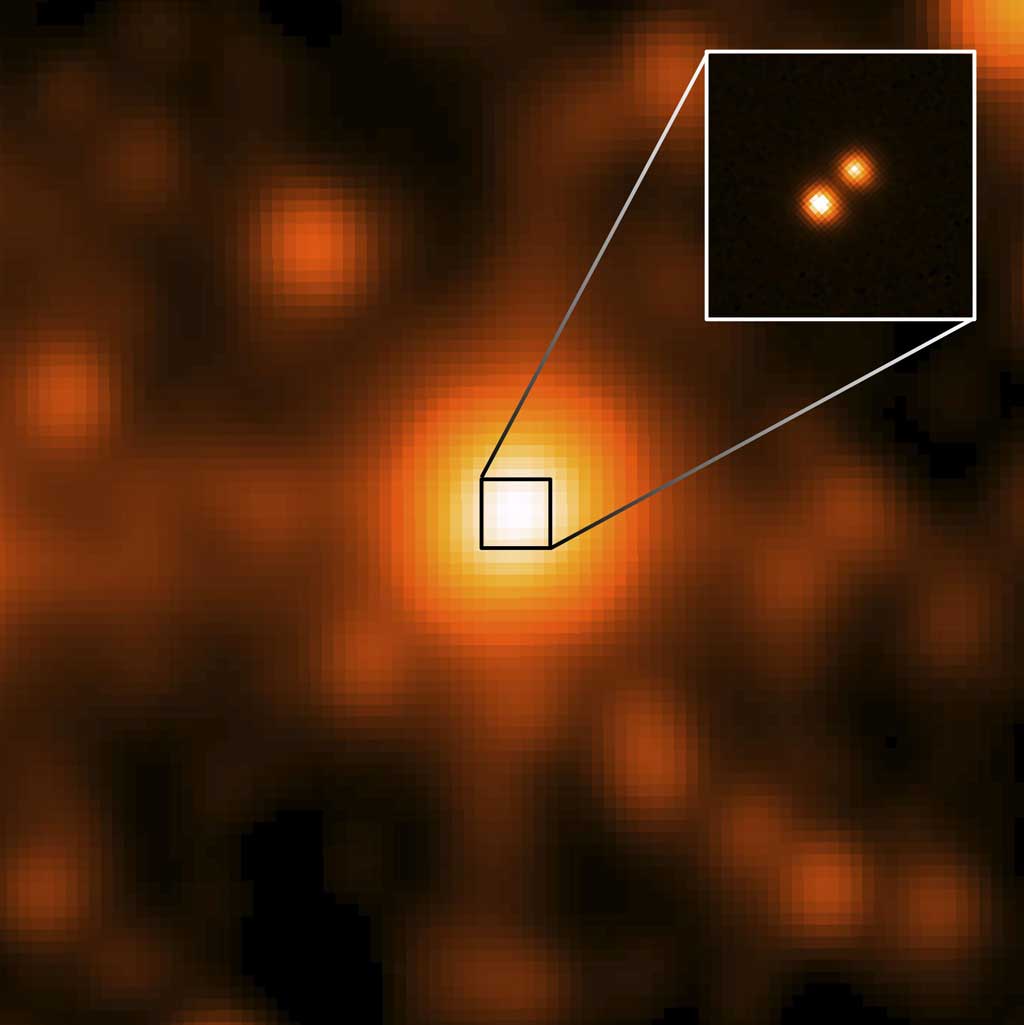In 1975, Jill Tarter, then at NASA’s Ames Research Center, coined the term “brown dwarf.” Before that time, astronomers hypothesized the existence of so-called black dwarfs, dark objects that were free-floating and lacked the mass to “turn on” as stars. Back then, ideas about low-mass, star-like objects suggested those with masses less than 9 percent of the Sun’s wouldn’t undergo normal stellar evolution. Instead, they would become “stellar degenerates” heavily laden with dust and characterized by cool outer atmospheres.
Various ideas about star formation suggested there should be many brown dwarfs in the galaxy. But being nearly dark, they’d be hard to find. The best strategy would be to look in the infrared part of the spectrum.
Lack of success in identifying brown dwarfs, which certainly should have existed, stymied astronomers. They turned to various methods in vain attempts to find them. These included careful imaging around main-sequence stars and white dwarfs, hoping to find companion brown dwarfs; surveys of young open star clusters, in which brown dwarfs could be floating freely; stellar radial-velocity measurements; and multiwavelength imaging surveys.
The result? Nothing.

Bringing the universe to your door. We’re excited to announce Astronomy magazine’s new Space and Beyond subscription box – a quarterly adventure, curated with an astronomy-themed collection in every box. Learn More >>.
Then, in 1988, Eric Becklin and Ben Zuckerman of the University of California, Los Angeles, identified a faint companion object to a white-dwarf star designated GD 165.
The white dwarf’s companion, GD 165B, exhibited an unusually red spectrum. Astronomers classed it as the first L-type dwarf, an extremely low-mass object. The star’s spectral signature showed characteristics Becklin and Zuckerman expected from a red dwarf, but with significant differences. Suddenly, astronomers had a leading brown-dwarf candidate.
In 1995, astronomers found three more. One, Gliese 229B, has a temperature and luminosity well below that of the coolest star. It is now the prototype of a class of still cooler objects called T dwarfs. With discoveries of many objects like Gliese 229B, one of the most nagging mysteries found resolution in the 1990s.
Classifying such objects is tricky, however. When brown dwarfs are young, it’s extraordinarily difficult to distinguish them from very-low-mass stars. The best test is to measure the amount of lithium in the object’s spectrum. Stars fuse lithium over their first 100 million years or so, but brown dwarfs cannot, so they show significantly more lithium in their spectra.
But the galaxy’s true brown-dwarf population remained ambiguous until the 2MASS All-Sky Survey, begun in 1997. Conducted at a wavelength of two micrometers, 2MASS revolutionized the search. Quickly thereafter, J. Davy Kirkpatrick of the California Institute of Technology and other astronomers found many objects like GD165B.
The population of brown dwarfs ballooned. In 2005, based on surveys using the Hubble Space Telescope, astronomers at Arizona State University estimated our galaxy may hold as many brown dwarfs as all other types of stars combined. Although a 2012 study suggested there may be only one brown dwarf for every six stars in the Milky Way, astronomers more recently used the European Southern Observatory’s Very Large Telescope to carry out an extensive survey of the massive star-forming cluster RCW 38, and their findings agree with five other surveys going back to 2006: Our galaxy contains about 100 billion brown dwarfs.












